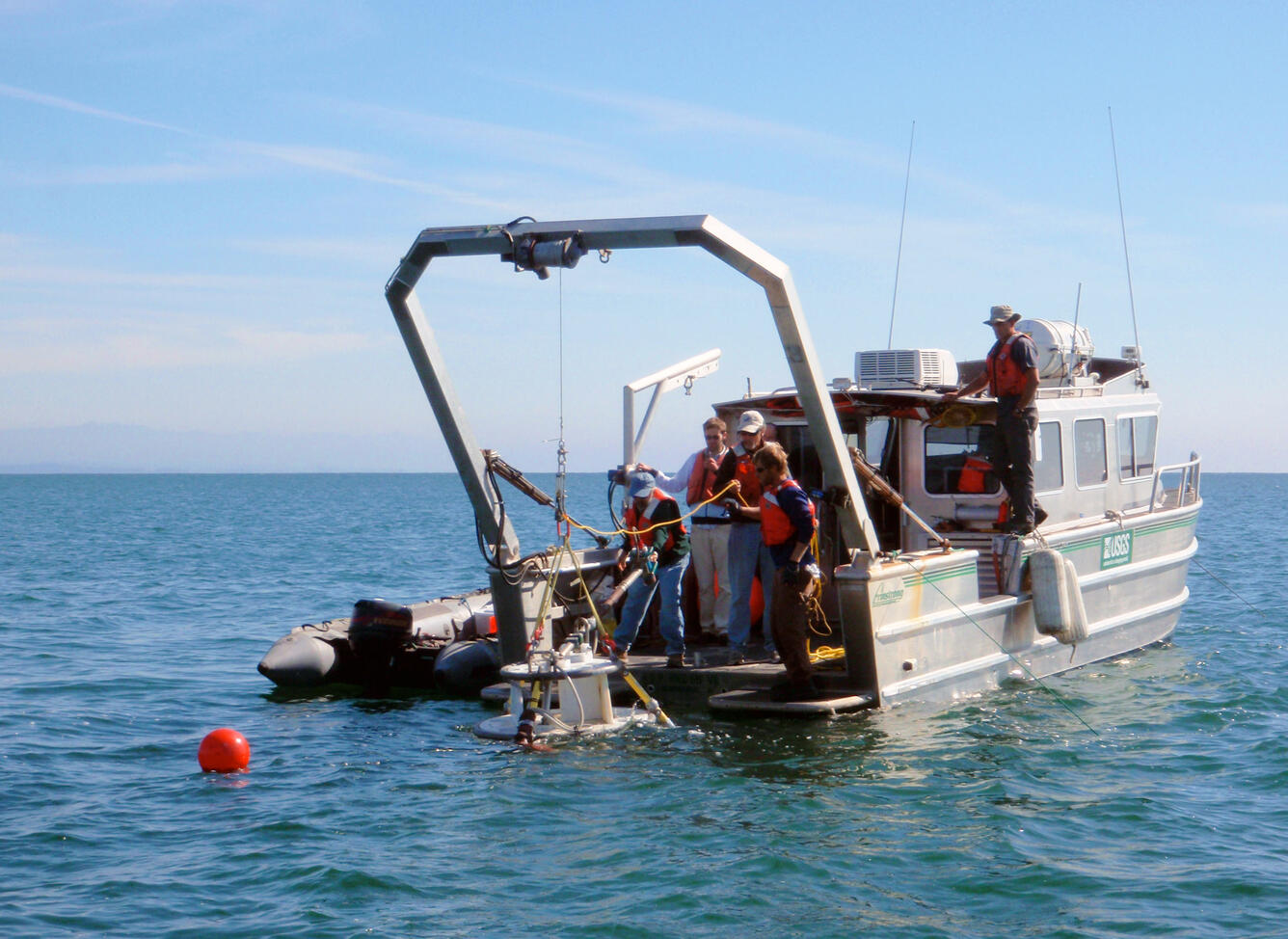Deploying the poking eyeball

Detailed Description
USGS scientists from the Pacific Coastal and Marine Science Center (PCMSC) in Santa Cruz, California deploy an instrument called the poking eyeball. The system, developed by PCMSC, was designed to take repetitive microscopic images of the seabed from a tripod on the seafloor. The images record changes in seabed sediment over time, and are used in studies of how changes in sediment grain size influence rates of sediment movement. The camera system was developed as part of the multinational EuroStrataform Project, a program funded by the Office of Naval Research to understand geologic processes on the continental shelf and slope that form sedimentary strata over a continuum of scales. The poking eyeball consists of five major components: a power pack, water pump, digital camera, electronic controller, and a mini winch, all designed to be mounted on a tripod that sits on the seafloor.
Sources/Usage
Public Domain.


